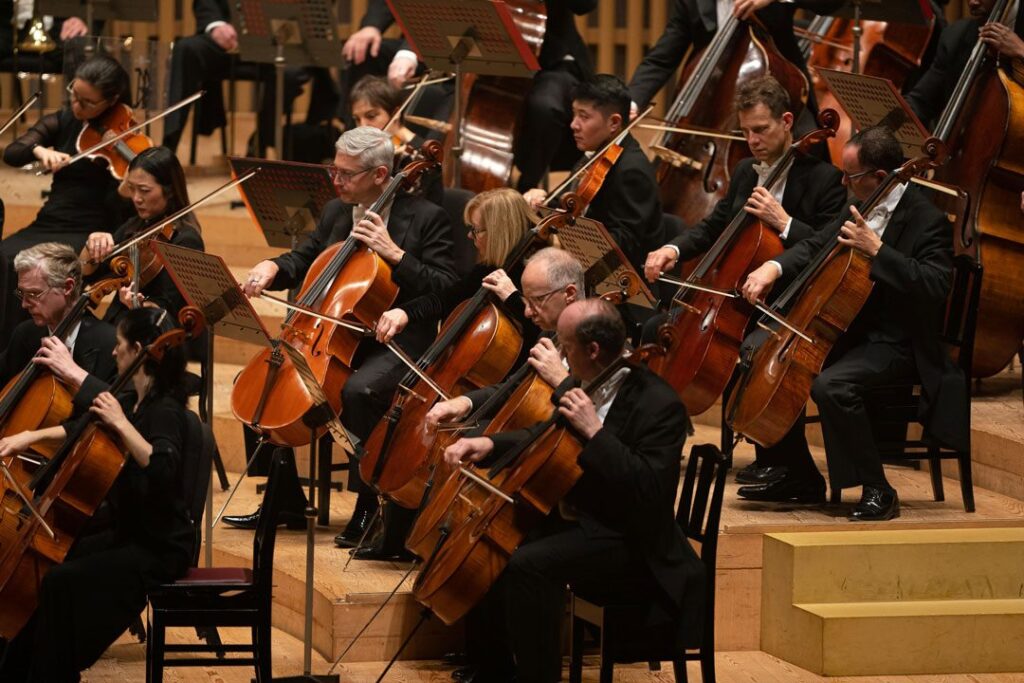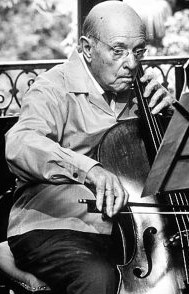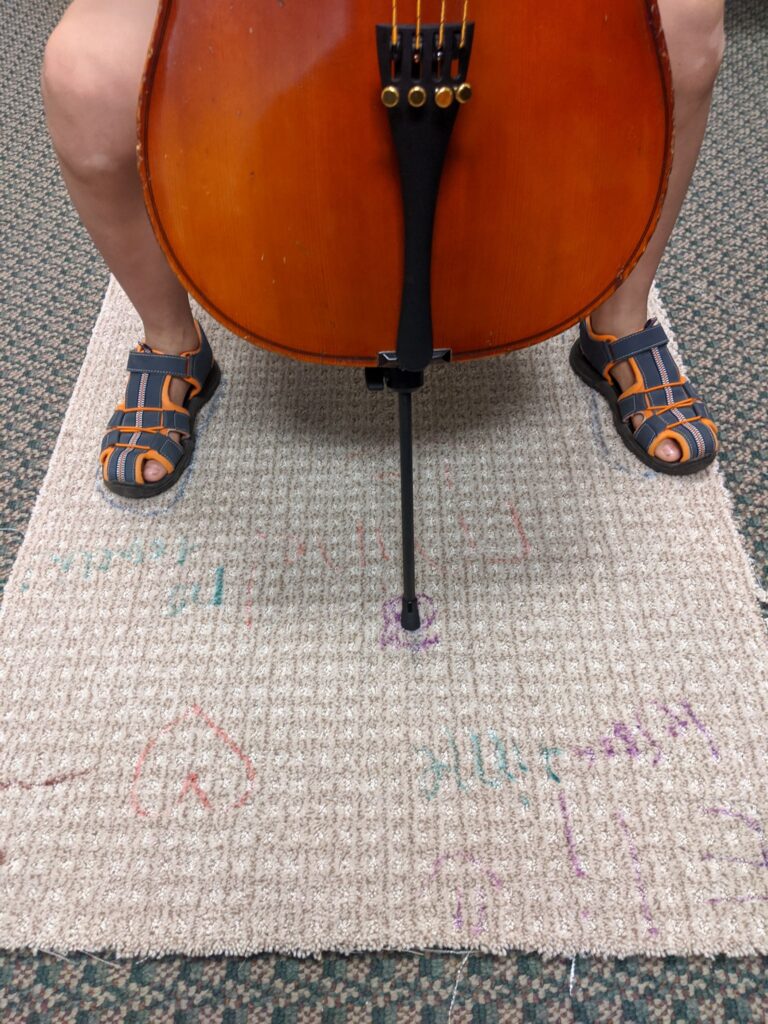Correct cello posture is the most fundamental element to good playing.
It seems like every student, no matter how advanced, needs to be reminded of posture. Whether you are just starting out or are playing major concertos, your posture can make or break your success on the instrument. Here’s how it works, the more complex the motion the more difficult it is for your hands/body to master. If your posture can make the motion more simple by eliminating unnecessary movement or tension, then you are going to be far more successful.
MAKE LIFE SIMPLE. SIT PROPERLY.
I think every teacher would agree with the paragraph above but how that is accomplished varies from cellist to cellist. Take a look at the cello section of any professional orchestra and you will note that cello posture varies from person to person — even among top professionals! Here is a photo of the very fine Philadelphia Orchestra cello section.

Notice in this photo professional men and women of widely varying heights and sizes. Each one varying slightly in their approach to the instrument. As you look closely, all the cellists pictured are holding the cello between their knees. Some professionals allow the cello to rest on top of the left knee but this is the exception not the rule. All of the cellists pictured here are resting the shoulder of the instrument more or less against the sternum, however the steepness of the cello angle differs slightly from cellist to cellist as determined by endpin length. I mention in the video, Yo-Yo Ma holds his cello much lower on his torso.
The bottom line is that we are all built a bit differently and excellent results can be found with a variety of cello positions but certain commonalities are found among most cellists. All have comfortably low shoulders. All are sitting up straight. All are positioned on the chair such that there is a slight decline from the center of their hip to the ball of the knee. You can’t see every section member’s feet but it appears that all have their feet planted flat on the floor (no feet tucked under the chair). Their bodies are prone, relaxed, and open so that they can maneuver on the instrument without having to adjust more than needed to access all parts of the instrument.
Pro Tip
Finding the right chair can be an important part of getting setup for success. Avoid any chair that slopes back, swivels, or has arms. Kitchen chairs work well for most but custom-built adjustable cello chairs, piano benches or adjustable stools can be a real back-saver!
Until the seated posture is consistent, no other muscle memory will be consistent. If the neck of the instrument is not in the same place at each practice section it’s impossible to build left hand memory. Differences in chair height everywhere you play your cello can become a genuine concern. Major professional symphonies generally provide personally-adjusted chairs for each permanent member of the cello section so that the cellist uses the exact same chair, which has been personalized to his/her preference, at every rehearsal and performance.

So for all the things cellists disagree on with cello posture, here are a few we do agree on:
1 – Tension is bad. If your posture encourages you to lift your shoulder, wrist, neck, or anything else to get to the instrument or if your posture causes you to strain in any way then you need to reconsider your approach to the instrument.
2 – Less motion is better than more. If you sit properly you should find that you can reach everything. Don’t be your own obstacle to success.
3- Playing the cello is so much better than playing anything else! It is one of the most ergonomic instruments in the world. Cello legend Pablo Casals played the cello well into his 90s. If you play with good posture you can literally enjoy a lifetime of music-making!
Creating a consistent cello posture is the first thing I endeavor to accomplish with all of my students. With especially young learners, I ask parents to bring the practice chair and a carpet remnant to the first lesson. Once the child is setup with good seated cello posture, I trace their feet on the carpet, make outlines for where the chair and endpin go, then draw a line on the chair so the child knows how far back to sit. I trace a line around the endpin so they know how far to pull the endpin out and then take lots of pictures for at-home reference. The cello carpet becomes a super fun way to build consistent posture. The child can decorate it all they want and it drives home the importance of how to sit anytime you are playing.



